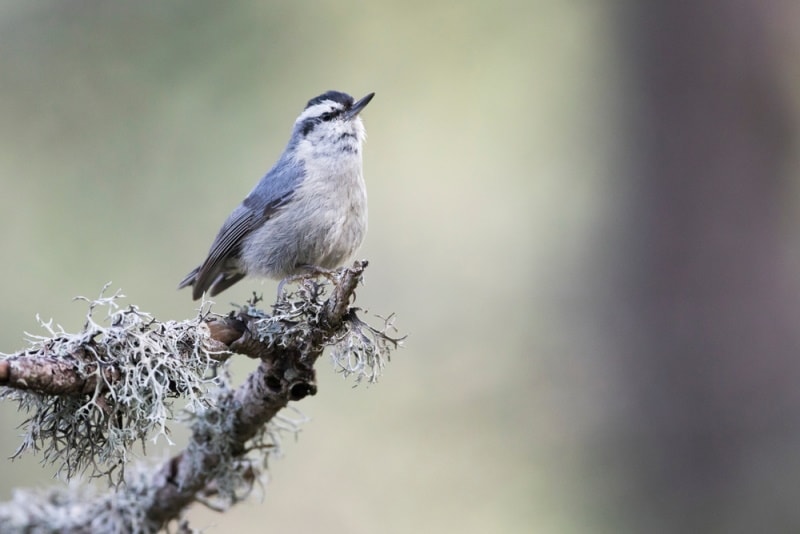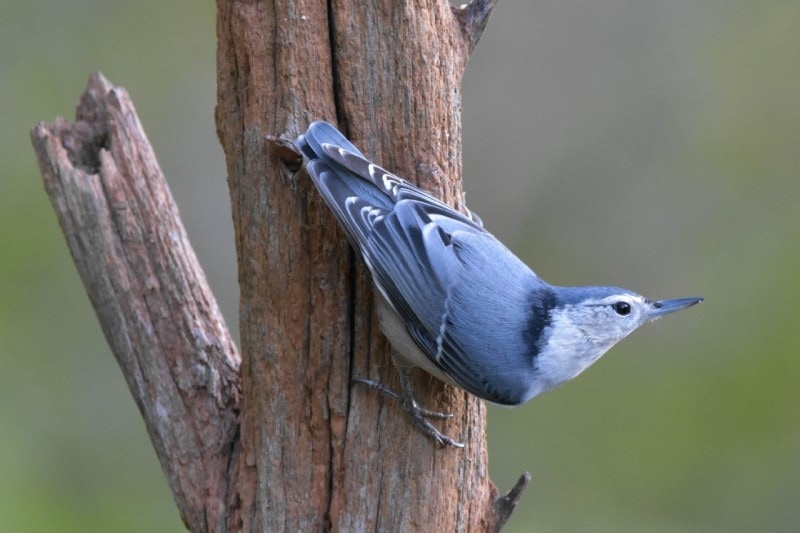Corsican Nuthatch: Field Guide, Pictures, Habitat, & Info
Last Updated on

If you are a birdwatcher in the United States or Canada, you might be familiar with the white-breasted nuthatch. However, have you heard of the Corsican nuthatch? Chances are you might not have heard of this species of nuthatch due to the fact you can only spot them on the island of Corsica, a territorial collectivity of France. You would be lucky to spot one!
Curious to learn more about the Corsican nuthatch? This article goes over information about this rare bird.

Quick Facts About the Corsican Nuthatch
| Habitat | Pine forests of Corsica |
| Diet | Pine nuts, small flying insects, small arthropods |
| Behavior | Territorial, not shy, sedentary |
| Nesting | 5-6 eggs per clutch |
| Conservation | Vulnerable |
| Scientific name | Sitta whiteheadi |
| Lifespan | Estimated 6 years |
Corsican Nuthatch: General Description
The Corsican nuthatch is a small bird, reaching around 4.7 inches in overall length. These nuthatches have grayish-white chests and bellies and bluish-gray wings and backs. The male Corsican nuthatch has a black crown. They have thin beaks, which help them eat their main food source: pine nuts.

Corsican Nuthatch Range, Habitat, Behavior, Diet & Nesting
Range: This species of nuthatch can only be found on Corsica Island in Europe; however, it has a wide range all over the island. On the eastern side of this Mediterranean island is the inconspicuous commune of Ghisoni. Lush forests, jagged mountains, and alpine lakes make this area a prime spot for Corsican nuthatches to be seen. In the northwestern region of Corsica is the Parc Naturel Régional de Corse, a prime spot for hiking—not too far south of Monte Cinto, the island’s tallest peak. This park and its surrounding area are filled with untouched wilderness, which makes it a great place to search for this nuthatch.
Habitat
The best place to find these nuthatches are in pine forests, particularly in the Corsican pines and white firs. The older pine trees are the better places to find the nuthatch as those trees are an abundant food source.
Behavior
Corsican nuthatches are sedentary and will rarely venture to the ground. They prefer the tree branches. These nuthatches are also territorial birds that will defend their homes. Corsican nuthatches remain in monogamous couples.
Diet
Pine nuts are the primary food for Corsican nuthatches. However, they will feed on small flying insects and small arthropods. A feeding behavior that nuthatches often exhibit is hiding seeds under tree bark to consume when food becomes scarce in the winter seasons.
Nesting
The breeding season for Corsican nuthatches begins in April or May, but it is also dependent on the cone production of the pine trees. If the cone production is low, the nuthatches will wait until there are more insects before breeding. The average clutch size for a Corsican nuthatch is around 4 to 6 eggs. The eggs are white with reddish-brown spots. Once the brood is around 3 weeks old, they will leave the nest.

How to Find Corsican Nuthatches: Birdwatching Tips
What to Listen For
Corsican nuthatches make a light pu sound, often repeated in 5 to 6 notes: pupupupupu. However, when these birds are agitated or threatened, they will make a psch-psch-psch sound and then move up to a sch-wer, sch-wer sound when at their peak of agitation.
What to Look For
Look for older pine trees when searching for the Corsican nuthatch. These birds prefer the older pine trees to nest in because they provide more food. Corsican nuthatches rarely venture to the ground, so keep your eyes to the tree,
When to Look
Breeding season is the best time to be on the lookout for these nuthatches. However, males will start singing for a mate in late December, meaning you might have luck seeing them during that month.
Attracting the Corsican Nuthatch to Your Backyard: Tips & Tricks
Unfortunately, unless your permanent home is on Corsica, you will not be able to attract this bird to your backyard. And even if you did live on Corsica, these nuthatches prefer sticking around old pine trees, not birdhouses.
Corsican Nuthatch Conservation: Is This Bird Threatened?
The Corsican nuthatch has gone through various conservation statuses. In the 1980s, these birds were considered “near threatened” by the International Union for Conservation of Nature. In the early 2000s, that status was changed to “least concern”. However, currently, their status is “vulnerable”. This species is a bit rare, as it can only be found on this one island. There are an estimated 2,000 of these birds living in the wild because their habitat has been encroached upon. Nesting areas were also affected, so their numbers haven’t had a positive look over the years.

Summing Up
The Corsican nuthatch would be a fantastic bird to catch a glimpse of if you are ever on Corsica. Despite the lush surroundings, this bird species is still considered vulnerable. It is important to understand that all things in nature can be thrown off balance. Hopefully, in the coming years, the population of the Corsican nuthatch will grow and move away from its current status to one where it is no longer threatened.
Featured Image Credit: Agami Photo Agency, Shutterstock
About the Author Robert Sparks
Robert’s obsession with all things optical started early in life, when his optician father would bring home prototypes for Robert to play with. Nowadays, Robert is dedicated to helping others find the right optics for their needs. His hobbies include astronomy, astrophysics, and model building. Originally from Newark, NJ, he resides in Santa Fe, New Mexico, where the nighttime skies are filled with glittering stars.
Related Articles:
10 Types of Hummingbirds in Arkansas (With Pictures)
8 Types of Hummingbirds in Nebraska (With Pictures)
5 Types of Hummingbirds in Idaho (With Pictures)
3 Types of Hummingbirds in Mississippi (With Pictures)
8 Types of Hummingbirds in Kansas (With Pictures)
5 Types of Hummingbirds in West Virginia (With Pictures)
5 Types of Hummingbirds in Ohio (With Pictures)
Where Do Nuthatches Nest? Nuthatch Nesting Habits Explained
